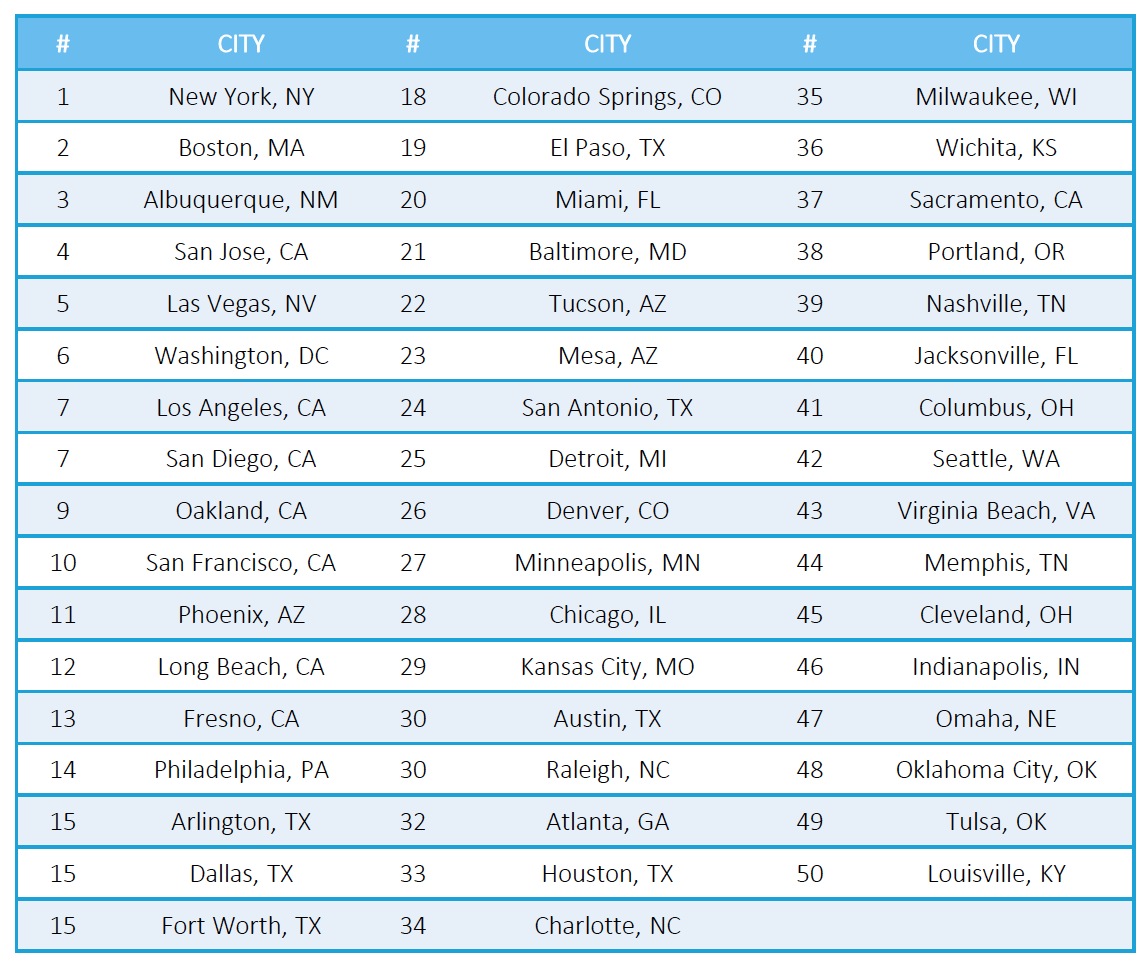NC CLEAN ENERGY TECHNOLOGY CENTER
Introduction & Executive Summary
Most Americans are unaware of the true financial value of solar today. Seen by many as a technological luxury, solar energy is not seriously considered as an option by most homeowners in the U.S. However, our analysis shows that, in 46 of America’s 50 largest cities, a fully-financed, typically-sized solar PV system is a better investment than the stock market, and in 42 of these cities, the same system already costs less than energy from a residential customer’s local utility. Of the single-family homeowners in America’s 50 largest cities, we estimate that 9.1 million already live in a city where solar costs less than their current utility rates if they bought a PV system outright – and nearly 21 million (93% of all estimated single-family homeowners in those cities) do if low-cost financing is available.
So why aren’t more Americans investing in solar? There is a clear information gap, and with this report, we intend to open the eyes of average homeowners by showing that solar can generate both significant monthly savings and long-term investment value, and not infrequently, cost less than energy from some of America’s largest electric utilities. What’s more, it is our hope that people will come away realizing that solar is now not just an option for the rich, but a real opportunity for anyone looking to take greater control over their monthly utility bills and make a long-term, relatively low-risk investment.
Overall City Rankings
In order to characterize how good of an investment solar PV is in America’s 50 largest cities, we designed a ranking system based on a 0-30 point scale that scored each city on the following factors (for a 5 kilowatt, or kW, system):
- The immediate (first-year) average monthly savings (before a loan payment) customers could expect (10 pts);
- The relative value of investing in solar relative to a long-term investment indexed to the Standard and Poor’s (S&P) 500 stock index (10 pts); and
- The “levelized cost” of the system, which can be compared to the cost of energy from a customer’s local utility (10 pts).
We then ranked the cities (seen at left) based on their score, which was tied to their percentile ranking within each category.
Part 1: Solar PV Today
While many states “deregulated” their energy markets in the 1990s, other regions chose to keep their utilities fully regulated and vertically-integrated. Since vertically-integrated utilities (particularly those in the South, Southeast and Midwest) can put more assets into the broader pool that they are allowed to recover in full from their customers through rates (called a “rate base”), they tend to build a significant amount of infrastructure upfront. In addition, even though a major tenet of utility regulation is to balance fair rates with reliable service and energy conservation*, utility regulators tend to push for residential rates at (what might be considered to be) artificially low levels relative to the utility’s true costs.
Surprisingly, however, this practice tends not to protect the interests of residential customers, nor does it encourage more efficient use of energy. As the chart to the upper right shows, data from the U.S. Energy Information Administration (EIA) shows that customers in regions with the lowest rates tend to use the most energy and pay the highest monthly bills. This data strongly suggests that maintaining lower rates does not have the desired effect of consumer protection, or of promoting efficient energy use.
To compound the high monthly utility bills customers pay now, it is very likely that customer bills will continue on a steeply increasing trajectory. As the map to the left shows, the EIA also forecasts that utility rates will rise between 33%-83% over the 25-year typical life of a solar PV system.
Many customers still mistakenly believe, however, that solar PV is not an option for them. This stems, in part, from a belief that they may not be able to afford it, and because their area does not have enough sunshine year-round. In fact, solar PV’s value to a customer tends to be most closely related to the degree to which solar can offset their typical use of grid energy.
It may seem surprising, but as the table to the lower left shows, customers with a 5 kW system in Chicago and Boston, (known more for their extended cold, grey winters than for sunshine) can offset more of their energy (and thus their bill) than they could in Phoenix, a location with some of the best solar resource in the United States.
Download full version (PDF): Going Solar in America
About the NC Clean Energy Technology Center
nccleantech.ncsu.edu
The N.C. Clean Energy Technology Center is a UNC System-chartered Public Service Center administered by the College of Engineering at North Carolina State University. Its mission is to advance a sustainable energy economy by educating, demonstrating and providing support for clean energy technologies, practices, and policies.
Tags: NC Clean Energy Technology Center, North Carolina State University, Photovoltaics, PV, Solar Energy







 RSS Feed
RSS Feed